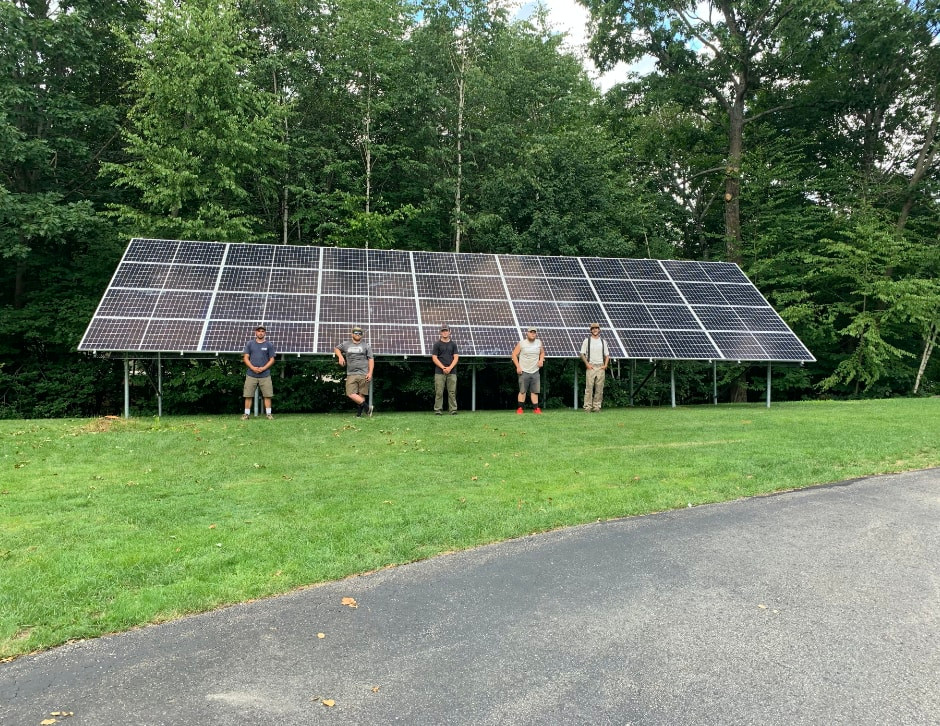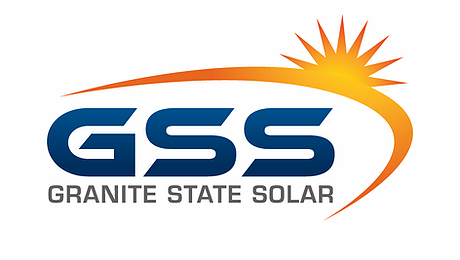Ask an Installer: Everything You Wanted to Know About How Solar Panels Are Installed
How are solar panels installed? And other questions this New Hampshire solar panel contractor team hears all the time.

Granite State Solar has been installing solar panels for homes and commercial properties in New Hampshire since 2008 and they’ve heard just about every question under the sun. Zach Olster, field operations director for Granite State Solar, shared the questions he gets again and again.
“The question we get the most often is, ‘Wow, are you guys done already?!” Zach says. “At Granite State Solar, we’re efficient, professional, quick, and clean. Customers are always surprised when we’re done with the job in one day and the job site is cleaned up already.”
Here are his answers to some of the most common questions he hears on the job.
Questions about Roof-Mounted Solar Panels
How Are Solar Panels Installed?
First, we measure the roof to make sure everything fits as proposed by the solar advisor. Second, the installers put the footings in, which is part of the whole racking system. There are the feet and then the rails that the panels will sit on. Then there’s a microinverter that will be underneath each panel, and what that does it converts the energy from DC to AC. And then the trunk line brings that into a junction box that’s on the roof that then ties into the rest of the electrical system.
On the electrical side, for fire safety reasons, we have a fire-safety external disconnect on the outside of the house. We then have a combiner panel that handles the system monitoring and communications and a source run that comes from that junction box, and that ties it all together. And then on the main panel, we tap into the utility grid to send power out as well as in.
Related: How Does Net Metering Work in New Hampshire?
Do Solar Panels Damage Your Roof?
It’s almost the opposite for the shingle life. If you think about having the solar panels sitting on top of your roof, the sunlight beating down on the shingles. You’re not getting debris—a lot of times you’ll see pollen and dead brush off trees falling on shingles and if that sits there that eventually starts to rot away at the shingle. By having the solar panel over your shingles, you’re adding life to your shingles as well because they’re not getting exposed to the elements as much.
Can Solar Panels Cause Roof Leaks?
We’ve taken every precaution to make sure you won’t encounter roof leaks when you go solar. When we put the footing in, there’s a 3½ inch lag that gets secured into the framing members, so the rafters under the roof.
First, we hit it with a pilot bit, to make sure that we’re hitting the rafter and not missing it and to prevent it from splitting. If you have a lag that isn’t fully sunk in, it’s going to move a little bit which is going to create a weak spot for water to come in, so it has to be a tight fit in the rafter.
After the pilot bit, we’ll do a nice big glob of GeoCel, which is a silicone-rubberized compound that cures under water. We’ll do a circle of that around the pilot hole as well as a big bracket around that for extra protection. And then we’ll put a dot right on the pilot hole, so as we put the lags in, the threads of the lags are catching with the GeoCel to seal up the threads. And then once the foot is in, we have a piece of flashing that then goes under the shingle to prevent water coming in as well.
Do I Need to Reinforce my Roof for Solar Panels?
We do an engineering report on the roof before we do the installs to make sure the roof can handle the additional weight of the panels, especially when you take snow into account. The engineer might recommend that we build a knee wall, which we can do that day. There is a fee for this structuring, but we’ll be a lot less expensive than if you call a separate carpenter to come in, because it’s a pretty small job. (A carpenter will charge you a lot more to send two guys out there and take time when they could be doing a bigger job.) For us, it mostly comes out to the cost of materials. We’re already there and we have the carpentry experience to simply do it on the spot.
What’s the Most Common Challenge You Run into?
An obstacle we may encounter is that the array doesn’t fit the way it was supposed to. This can happen if the roof is too high up or too steep and the advisor can’t get a totally accurate measurement on it, or a skylight or vent pipe gets in the way if the advisor didn’t have an exact measurement of where it was.
Us in the field, we go up there and measure everything. We come up with ‘this is how it could fit,’ we could drop a panel, add a panel here, move it around. And we come up with the best answer between the customer as well as the solar advisor to make sure that their production is still being met if we need to drop a panel. It does happen, but the customer usually comes out pretty happy.
Will my Gutters Work with Solar Panels?
When we design the system, the installers will always make the start of the system at least a shingle high, that way when the water beats off the panel, it’ll still run off into the gutter.
Will I Have to Cut Down Trees?
It is a possibility. That’s typically something our solar advisors will go over. They will look over your utility bill and see how much electricity you actually consume and then we have a tool that lets them see the shading analysis through the year. It’s an advanced piece of technology and it lets them detect based on the azimuth of the sun and our latitude and longitude what the shading is going to be like. The sun is going to be lower in the wintertime and higher in the summertime, so trees in the summer might not affect the array but in the wintertime, it will. That piece of equipment can take all that information and account for it, so the solar advisor is coming up with the correct number of panels you’ll need.
There may be times that a customer will have to cut trees down to reach the production number that they need to cover their utility bill. If it’s a question, my advice to the customer is always—wait a couple of months and see how much production you’re getting with the tree there. And if you’re covering your utility bill and getting the production you want, you can leave the tree there. You can always take it down later, but you can’t put it back up—especially if it’s a nice birch tree. No one wants to take that down.
How Do You Maintain Solar Panels?
Typically, mother nature does a great job at maintenance. There’s no real cleaning necessary. The only thing that’s going to stick to the panels is some pollen, and rainfall’s going to take care of that. (And the pollen’s not really going to affect the production.)
Must Read: Reasons to Go Solar in New Hampshire
Questions about Ground-Mounted Solar Panels
How Do You Do Ground Mounted Systems without Concrete?
We use the earth anchors instead of a ballasted system. These are which are driven into the ground and tensioned to a specific torque, much like the ones utility companies use on their street poles. Using mini helicals is also a popular technique. These are driven into the ground, about 5-feet deep, and then we build on top of that. This prevents us from having the ugly concrete ballast in the yard. We’ve stayed away from the ballasted system unless it’s absolutely necessary like if there’s too much ledge under the ground, big boulders that we physically can’t get into it.
How High Off the Ground Are Ground Mounted Systems?
We keep the lowest point at least three feet just to allow room for the snow to fall off and not build back up. And there’s enough room for someone to take a lawnmower under it or a weed whacker under it to keep everything looking clean. And there are no worries about wires. Everything’s all protected. We do our wire management and then we also put a black mesh material over the back that covers up the microinverters and the connection points for the wires, per electrical code. If someone’s going under there with a weed whacker or something, you don’t want them to accidentally hit it or if kids get under it.
Are Solar Panels Safe for My Kids?
Kids think ground mounts are jungle gyms. While we discourage kids from climbing on ground-mounted systems, we do try to make it as safe as possible, in addition to covering up wires. When we cut any metal off the ends, we file it down to get the burrs off so if you do happen to scrape against it, it’s not going to be as abrasive or cut your hand open. Any sharp edges we try to cover up. We put caps under all the rails. That sort of thing.
By Julia Westbrook
Read on! 9 Questions to Ask Solar Panel Companies
Want to get this team working for you? Reach out to our solar advisors today!

Leave a Comment